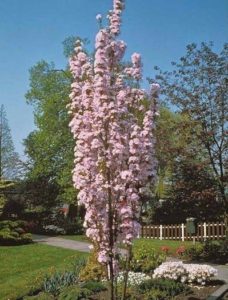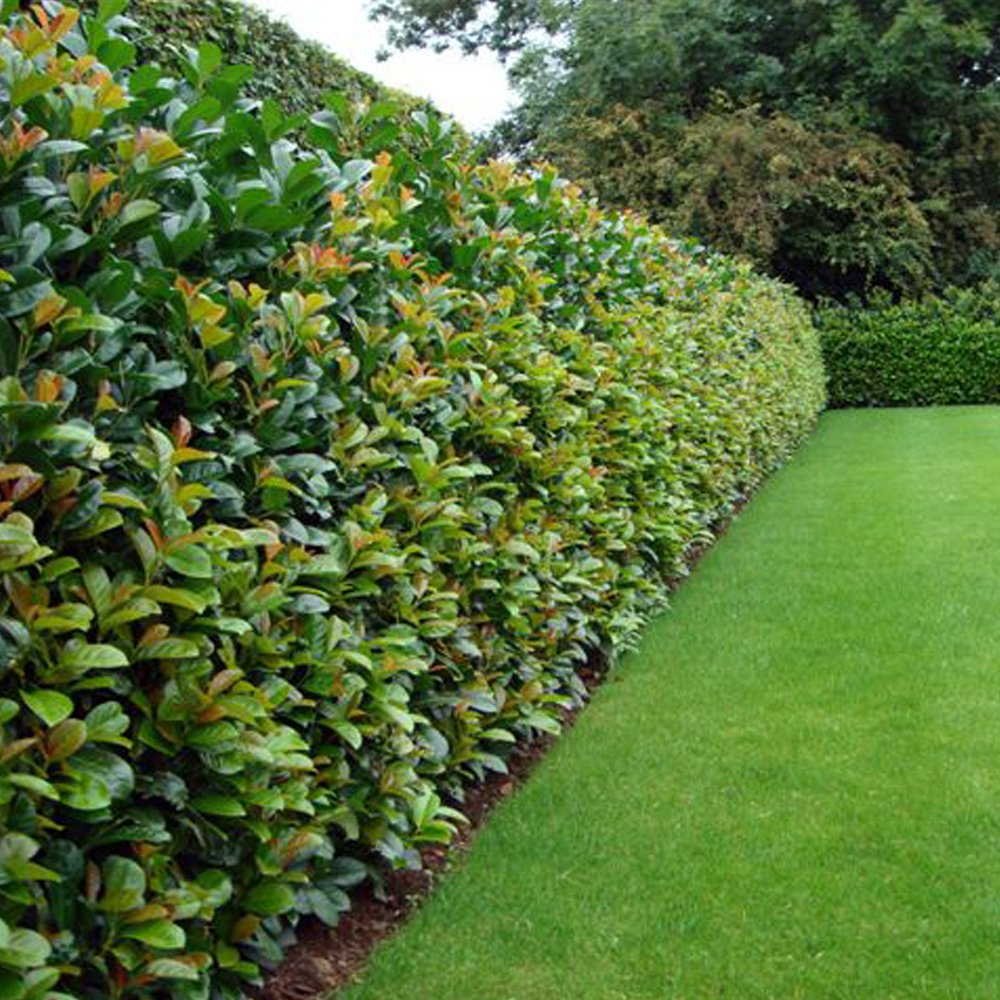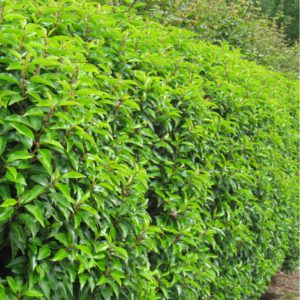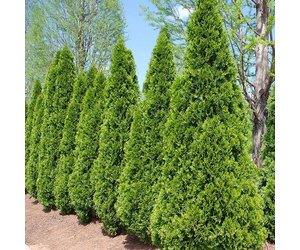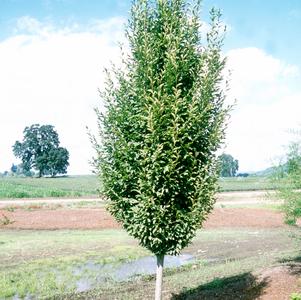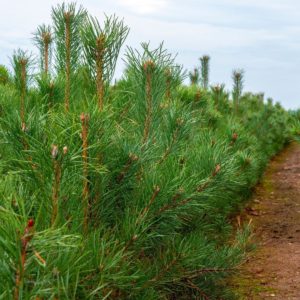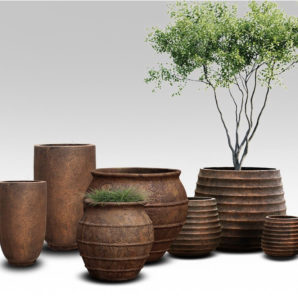- +353 (0)45 879 170
- info@caraghnurseries.ie
- Stickens, Caragh, Naas, Co. Kildare, Ireland
Our Field Stock
The semi-mature trees that we have planted in our own fields, are allowed to grow in the open ground and so have established healthy, strong root structures. As more mature trees they have been allowed to grow over a good number of years, with the right amount of care, pruning and special care to their root structure. If the roots are allowed to grow too extensively it will not only make the tree too hard to move, it will also mean the root structure is not as strong. This and some careful pruning does mean that the head of the tree will not be as big as if it were left to it’s own devices, however this is to the benefit of the tree long term and makes it an awful lot easier to move the trees to their new homes too. We are the premier supplier in Ireland of rootballed and mature trees to the general public and so our range is extensive and we have a large supply. Making sure we always have availability of what you want is imperative to us.
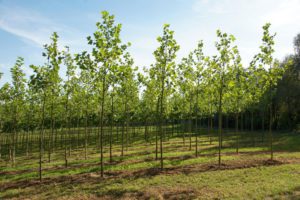
We are still growing, on over sixty acres in production in Caragh, and that has been increasing over recent years. We grow all our hedging plants, a large selection of trees and some larger shrubs and we also have a good base of shapes and specimens growing. Stephen, our field production manager, has his work cut out keeping everything in shape but he does it with such care and skill and we have a good crop that we are still lifting out this year.
We are constantly striving to keep on top of our stock and this week a full stock take was taken of all our nursery including our field productions to ensure that enough stock is ready to be lifted as possible. We grow as much of this stock as we believe we need, although the last couple of years we have had to supplement when we run out. It’s like all things a balancing act and preempting what will be popular in three years time, which is the average time between sowing and lifting, is a real task. We analyse what trends we believe will coming in and what might be going out and attempt to look at the economical factors too.

The following is a list of our favourite field options that we believe will be favourites for you too:
The silver birch is a graceful and attractive tree with its light airy foliage and distinctive white peeling bark. It has been an inspiration to writers, poets and artists in every season throughout the centuries. It is native to Ireland and its striking bark colour is one of the main reasons that the silver birch has become such a widely planted garden tree. We have a number of more mature options available, ranging from 14-16cm girth, right up to 25-30cm girth and multi-stems up to 4-5 metres tall too.
The Amanogawa Cherry is a small, fastigiate with a lightly fragranced display of pale pink double flowers in Late Spring. The green leaves turn orange to red in the Autumn. Perfect for a small area or garden. We have a few different size options here too, but a very popular 10-12cm girth that’s between 3.5-4m tall already!

This beautiful crab apple is covered with white flowers in spring. The flowers open from red buds. In autumn, it gives another show. At this time, the tree is covered in red-flushed, orange- yellow fruits. ‘Evereste’ is an excellent tree for smaller gardens. These have been grown as Specimen Multistems as a centre piece, or focal point tree.
Familiar in late Spring, this stunning golden yellow display brightens up many a garden with its lavish and long lasting show of yellow flower clusters. It is not a big tree but does gain plenty of width as it matures. Prefers a sheltered, sunny position. Again, we have a few different sizes available, including a popular 10-12cm girth rootballed option thats between 3-4 metres tall.
Betula ‘Jaquimontii’ is a distinctive upright tree noted for its dazzling white stems that look good all year round, even when the foliage has gone. Fresh green summer foliage turns rich gold colour in autumn. Although beautiful as a specimen tree these trees are excellent to create an avenue effect or in groups of 3 or 5 in an impressive bed. The wispy, light foliage makes it ideal for underplanting as it lets a good amount of light through.
A beautiful dark green, evergreen hedge with glossy leaves that start a stunning orange to red when new, making a lovely contrast. It is slower growing than the common laurel, making it easier to maintain and although it is dense, it will not grow as wide. Easy to maintain, this hedge will only need cutting once a year. These clipped columns are ideal when instant hedging is required and the significant size of these specimens, means fewer plants will be needed.
Similar to the rotundifolia but slightly more elegant, though not quite the same growth rate or as dense initially. It is conical in shape with dark green, lustrous elegant leaves. There are white flowers in slender upright clusters in early summer, and dark purple-black fruits in autumn, but it is primarily grown for its strong shape. This can be grown as a specimen shrub or used to create a formal hedge.
These easy to grow, deep green hedging trees are an extremely popular option for a medium sized privacy screen. Emerald Green Thujas are exceptional performers, adaptable to a variety of soil conditions and weather extremes. They doesn’t have any ugly browning in even the coldest of winters, meaning no unattractive dead spots or holes like some conifers. Plant every 3 foot for a screen, mature height of around 10 feet so easy to manage. At over 2 metres tall already, we’ve done the hard work growing these beauties, so you don’t have to.
The flavour of home-grown apples, Malus domestica, beats that of shop-bought varieties any day. What’s more, a much greater variety of cultivars is available if you grow your own. Apple trees are easy to grow and are available grafted on to a range of rootstocks, making them perfect for growing in any size of garden – some can even be grown in containers. Malus domestica benefits from growing in a sheltered, sunny spot, where the blossom will attract the greatest variety of pollinators and where the sun will ripen the fruit. Mulch annually and water in dry spells. Malus domestica is known for attracting bees, beneficial insects, birds, butterflies / moths and other pollinators. It has nectar/pollen rich flowers, provides shelter and habitat, makes a good wildlife hedge, has seeds for birds and is also a caterpilar food plant. Whats not to love?!
This upright or Fastigiate hornbeam makes a superb specimen tree with its tidy upright head, it requires clipping once a year in mid-to late summer to keep it looking tidy. Green catkins appear in spring and winged nuts develop in autumn. This tree works really well as an avenue tree along a driveway with its upright habit and is a really popular stately looking tree. Most of these trees are feathered all the way to the ground. Available in 12-14cm and 14-16cm girths, these trees measure 3.5-4 metres and 4-4.5 metres tall respectively.
These Scots Pine have been grown in our fields in Caragh, making them strong and bulky with their needled blue green foliage and the orange burnt red bark, contrasting beautifully. Ranging in sizes starting from 1.2 metres and all the way up to 2 metres, we have options for every budget.
.
Quality control of this stock is of utmost importance, as we do our best to ensure that only the best quality products are delivered to you. Keeping on top of this alone is enough to be keeping us busy, so next week we will follow up with a few more of our favourites from the field. A reminder though that our field production is only available until the end of March and with some of these we only have limited stock, when they are gone , they are gone for another year! Don’t say I didn’t warn you
Did you see our Pot Collections ?

Quick Links
Information
Location
- Stickens, Caragh, Naas, Co. Kildare, Ireland
Copyright © 2025 CARAGH NURSERIES LTD | All Rights Reserved. eCommerce Web Design by 2Cubed | Privacy Policy | Cookie Policy
FREE DELIVERY
Our Gift to you
On all orders made online over €100


